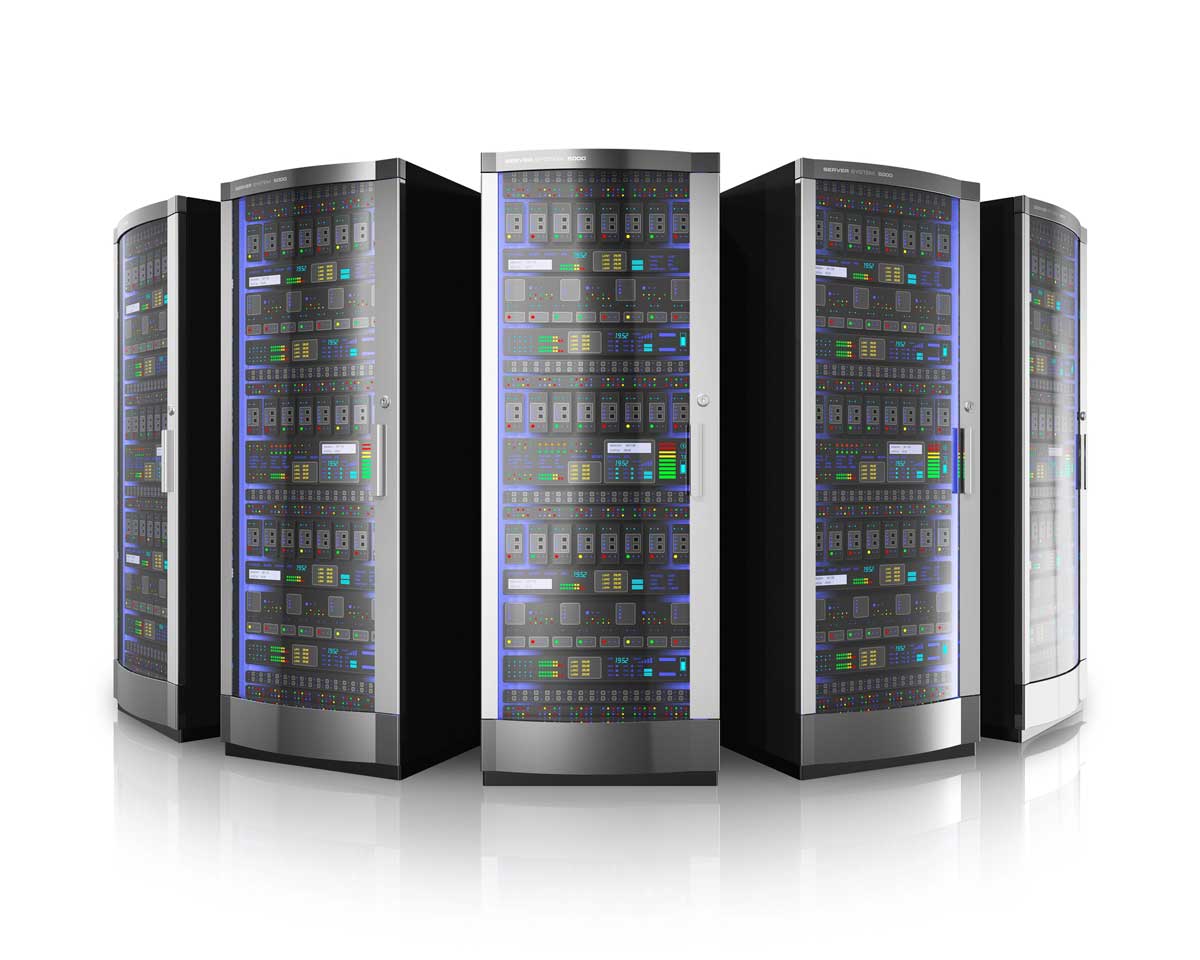A major change to leasing rules – coming in 2019 – has the potential to upend traditional data center hardware acquisition models. It also presents a major opportunity for enterprise IT vendors in a financial position to capitalize on the changes.
Disclaimer: I am not an accountant or an expert on all of the nuances of leasing. Make sure you follow up with your CFO and/or accountant to get a full understanding of your specific scenario and how you’ll be impacted.
Welcome to the super-interesting world of FASB and IASB! You may think you’d rather watch paint dry than reading about leasing rules, but this time, you should make an exception. Many of us – a whole lot of us, in fact – use various leasing mechanisms to finance data center equipment purchases. Leasing has become an integral part of the IT equipment lifecycle replacement plans. In general, there are two types of leases – capital leases and operating leases.
[su_box title="What are FASB and IASB?" box_color="#22893b" radius="4"]The International Accounting Standards Board (IASB) is an independent standards-setting arm of the IFRS Foundation, an organization dedicated to developing consistent international financial reporting standards. The intent of this organization is to ensure that the accounting practices used around the world are transparent, understandable, and comparable. Learn more here at Wikipedia. From Wikipedia: “The Financial Accounting Standards Board (FASB) is a private, non-profit organization standard-setting body whose primary purpose is to establish and improve generally accepted accounting principles (GAAP) within the United States in the public's interest.” In general, the FASB is the American body that cooperates with the IASB in order to help normalize financial accounting around the globe.[/su_box]
Capital Lease
For all intents and purposes, a capital lease looks and acts almost like a bank loan. The lessee owns the assets under lease and records them as such, along with depreciation, just like they would if they had they purchased the assets outright. With a capital lease, like a loan, the lease balance appears as a liability on the company’s balance sheet. It’s a pretty straightforward arrangement. In most cases, at the end of the lease, the customer has the option to buy the equipment for some buyout price, which can be as little as a $1 buyout. In fact, if you have a lease that has what is often termed as a “bargain buyout” option, in almost all cases, it must be classified as a capital lease.
Operating Lease
With an operating lease, the lessor retains title to the equipment under lease and the lessee simply pays the leasing company a fixed monthly rental fee to use that equipment. Many companies prefer to use the operating lease methodology since the payments are truly operational costs. Further, for now, a lease that meets the conditions necessary to be classified as an operating lease does not appear on a company’s balance sheet as a liability. This is a key driver into why some organizations use leasing rather than other financing mechanisms, particularly if they have other debt. A properly classified operating lease often does not impact certain debt covenants and ratios that may exist in the business.
Further, the equipment rented under an operating lease does not appear as an asset for the lessee. The equipment is rented, and a check is cut each month, quarter, or year to the leasing company.
There are a number of conditions that must be met in order for a lease to be classified as an operating lease as opposed to a capital lease:
- There can’t be a bargain buyout option at lease end.
- The ownership of the equipment can’t transfer from the lessor to the lessee.
- The value of the lease payments must remain under a percentage of the fair market value of the equipment under lease
- The term of the lease can’t exceed more than 75% of the economic life of the assets being leased
If a lease fails one or more of these tests, it cannot be classified as an operating lease and must instead and treated as a capital lease. The impact is that the assets may be placed on the lessee’s books and the lease may be treated as a liability on the lessee’s balance sheet, which, as described above, is not always desirable.
[su_box title="The Start Date" box_color="#22893b" radius="4"]The new leasing rules take effect on December 15, 2018, for publicly traded companies and December 15, 2019, for privately held companies. What I’m presenting here is a fraction of just one aspect of the changes. If you lease anything – equipment, office space, etc. – the rules are changing, and you need to get with your accountant now to understand how the changes could impact your business, including your ongoing ability to get financing. Don’t treat what I’m saying here as expert guidance as to what you need to do. If you want to read a whole lot more about these rules changes, Deloitte has a great guide to everything here.[/su_box]
IFRS 16 in 2019: D-Day for Operating Leases
[su_pullquote align="right"]Forbes says it best: “The Securities and Exchange Commission (SEC) asked FASB to craft these new rules in 2005, after seeing that ‘approximately $1.25 trillion in non-cancelable future cash obligations committed under operating leases’ were basically living in the footnotes of financial statements instead of holding weight across the actual balance sheet — the kind of weight that gives investors and creditors a true picture of a company’s financial health.” source[/su_pullquote]
For 2019 and beyond, the situation is changing in pretty dramatic fashion thanks to what is termed as IFRS 16, which is the set of leasing rules changes put forth internationally. The US implementation of IFRS 16 is managed by the FASB under US generally accepted accounting principles (US GAAP). Unfortunately, this means that the US has some different rules than other countries.
I’m not going to get into every nuance of everything that’s changing but will focus on a key component that could have a dramatic impact on how companies lease IT equipment. Of course, the rules impact all kinds of leases, but of interest to this audience is technology equipment, hence the focus.
In short, the days of most operational leases not existing on the balance sheet will be over. The new rules change will require that operating leases in excess of 12-month terms be placed on an organization’s balance sheet as a liability along with corresponding asset values. Frankly, such leases are, in fact, liabilities, so this new treatment can help those reviewing a company’s balance sheet get a better sense for the company’s actual obligations.
In essence, there will be no more capital vs. operating lease, at least in terms of how these instruments are treated financially. The leased assets will be accounted for as assets of the lessee and the lease liability will be included on the lessee’s balance sheet. In reality, under US GAAP rules, there will still be a technical distinction between capital and operating leases, although this will not be the case in other countries.
There are some exceptions to what at first may appear to be a hard and fast rule. As I mentioned before, the rules change impacts leases longer than 12 months in duration. If you have a lease that is 12 months or less, it doesn’t need to be added to the balance sheet. Further, according to this article from PWC, “Lessees are not required to recognise assets or liabilities for leases of low value assets such as tablets and personal computers, small items of office furniture and telephones.” Unfortunately, from what I can tell, there is no exception for low value assets under the FASB/US GAAP implementation. If you’re in the US, you’ll need to include low value leases on your balance sheet.
Ramifications and Opportunities
For customers, the ramifications of this accounting change are actually quite significant. The change will expose far more liability on the balance sheet that current operating lease procedures require. As mentioned, this could impact any number of other financial metrics. As is the case today, operating leases in the US will still need to pass the tests in order to be treated operationally.
And then there’s the cloud. If you’re wondering what the cloud has to do with any of this, consider the financial picture. The cloud enables a true operational consumption model without any need to change the balance sheet. You can get out any time you want.
Over the past few years, vendors have developed programs that are intended to mimic the cloud economic operating model. Unfortunately, many of these programs are leases disguised as pay-as-you-go models and may have terms that exceed 12 months. It’s doubtful that these programs will be treated differently than other leases.
Some vendors, however, are developing programs that they believe will pass the new test and become true operating expenses that don’t require balance sheet disclosure. In these programs, the vendor itself operates the program rather than using leasing companies as intermediaries. This alone may not protect customers against balance sheet disclosure, though. The program still needs to conform to the rules, including the term of the commitment. Further, while I attended Pure Storage’s Accelerate conference, company representatives also indicated that a program may not be exempted from reporting requirements if customers are able to choose specifically named equipment choice. On the other hand, if the supplier makes the equipment decision, it would pass the test. I have not been able to independently validate this requirement, however, so if you have further information, I’d love to hear it.
For companies like Pure, this kind of program can be an opportunity. They get the benefit of getting and keeping the customer, along with all fees associated with the program. There is no leasing company in the middle. On the other hand, the company may not be able to get much in the way of “cost of money”, so there could be a financial opportunity cost to providing such programs. Time will tell to see how well these programs perform.
Summary
If you rely on leasing to fund and operate your data center hardware acquisition and replacement, make sure you fully understand the major rules changes that are coming in just a few short months.




















